
SIA Researchers Proposed Light-Weight Multi-channel Scheduling Algorithm for Industrial Wireless Networks with Mesh-Star Hybrid Topology
Apr 22, 2014 Email"> PrintText Size

As wireless sensor network (WSNs) technologies are becoming more mature, research on WSNs has shifted from theoretical research to applications, where industrial wireless network is a representative example. At the same time, industrial applications require reliable and real-time data transmission for the deployed industrial wireless networks. Due to the fact that multi-channel transmission scheduling can greatly improve network throughput and in the meanwhile effectively avoid communication conflicts, it currently becomes a hot spot topic in industrial wireless networks.
Specifically, WIA-PA (Wireless Networks for Industrial Automation-Process Automation) is developed for process automation of industrial wireless network specification in China
So far, there have been lots of works on multi-channel scheduling problem for mesh networks. Highly dynamic industrial wireless channels as well as the rigorous real-time performance requirement imposed by industrial applications commonly leads highly complex solution method. In addition, current researches concentrate on structures such as mesh structure, line-clusters and tree clusters, and do not apply to the mesh-star hybrid network topology. For this, the researchers from Shenyang Institute of Automation, Chinese Academy of Sciences (CAS) propose a novel light-weight multi-channel scheduling algorithm for industrial wireless networks with mesh-star hybrid topology. The proposed algorithm could efficiently avoid transmission conflictions, and reduce the complexity of the algorithm at the same time, which implies the easy implementation in practical applications. An example of WIA-PA network with mesh-star hybrid topology is shown in Fig. 1.
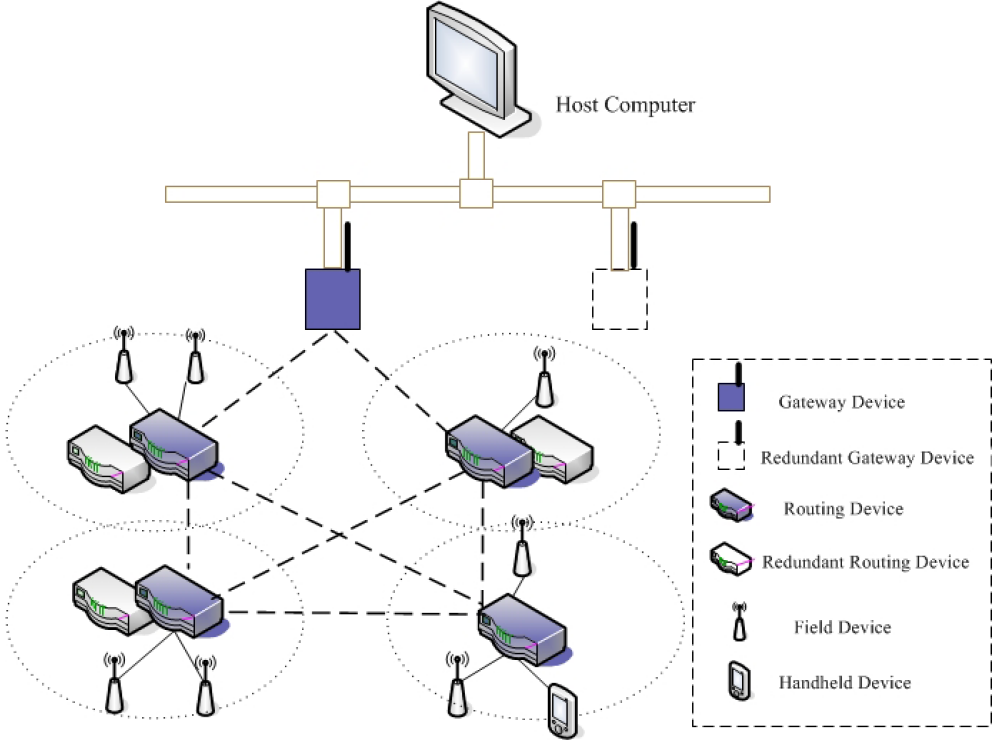
Fig. 1. An example of WIA-PA network with mesh-star hybrid topology (Image by LIANG Wei et.al)
The core of the algorithm includes:
– Determine the routing device which has the maximum number of hops away from the gateway and transmission path 1.
– According to the preceding analysis of the structure, calculation of the required time slot and channel number.
– The search algorithm based on path deposit the full path scheduling into the resource allocation table; if there is multiple paths in the network, following the same method to generate path 2∼N scheduling, and dispatching all scheduling merged into the network resource allocation table eventually. The flow chart of the algorithm is shown in Fig. 2.
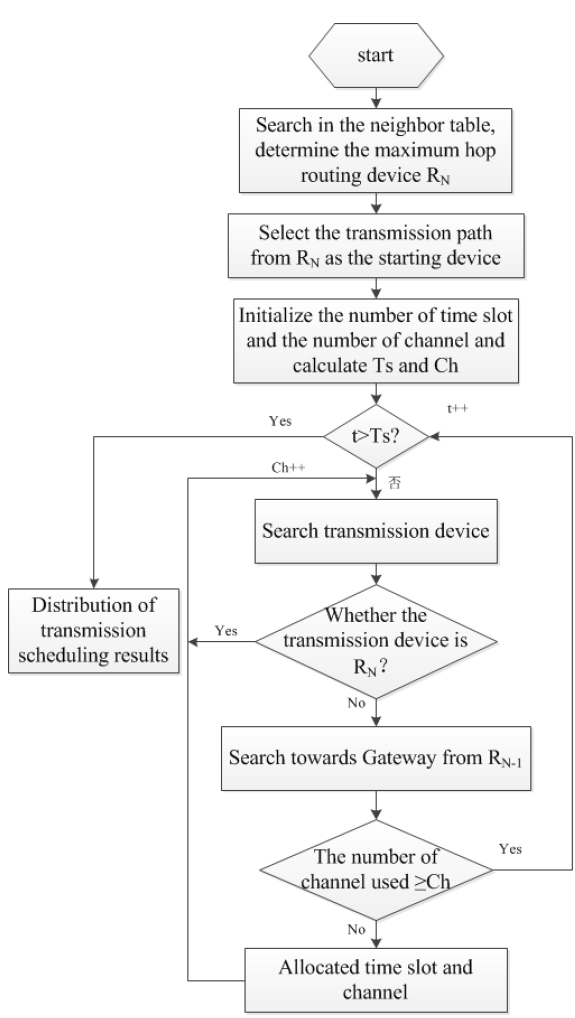
Fig. 2. Flow chart (Image by SIA et.al)
The performance of multi-channel scheduling algorithm is analyzed by Matlab simulation software, and the researchers make a comparison with WirelessHART centralized transmission scheduling and a classic centralized channel edge coloring algorithm proposed by paper on time overhead and network throughput. The Parameters in simulation is shown in Table 1.
Table 1. Parameters in simulation
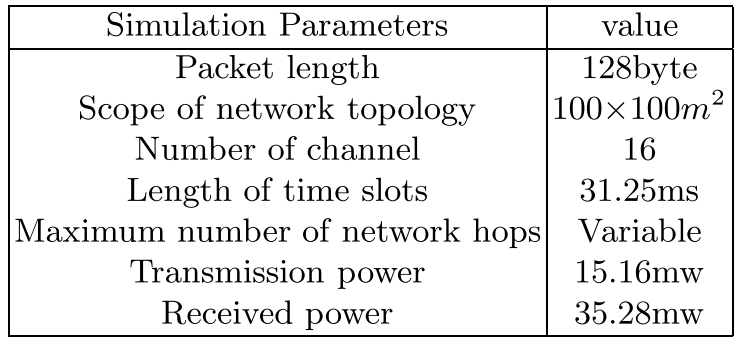
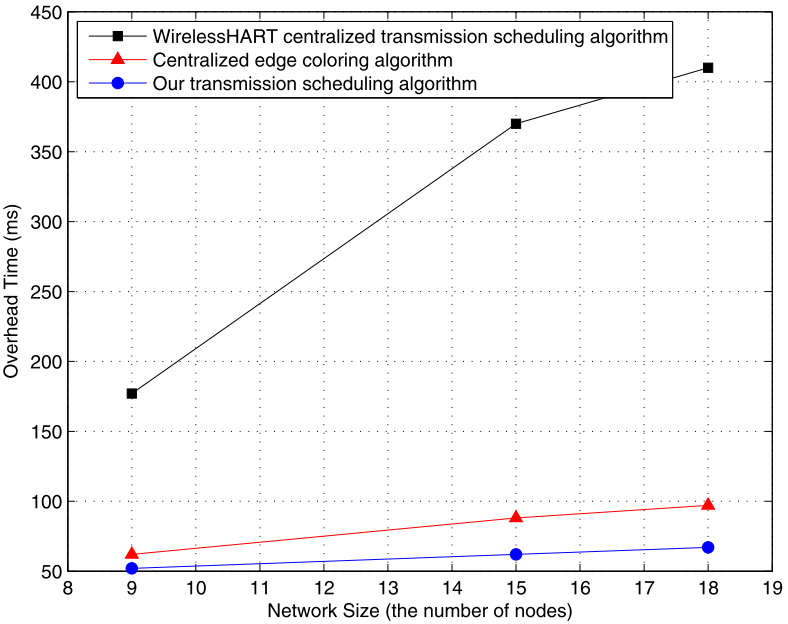
Fig. 3. Comparison of time overhead (Image by LIANG Wei et.al)
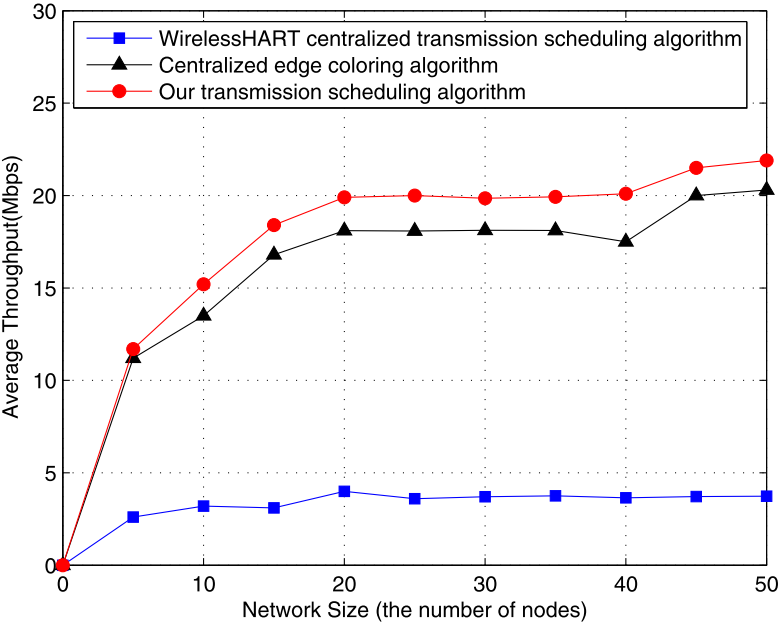
Fig. 4. Comparison of average throughput (Image by LIANG Wei et.al)
Fig. 3 shows a comparison between the three algorithms mentioned above of time overhead. The transmission scheduling algorithm reduces 6 to 8 times to complete transmission scheduling time overhead compared with WirelessHART centralized approach; although edge coloring algorithm has a good rapidity, it spends a certain amount of computation time on routing identification and judgment on coloring, the time cost of the algorithm is also higher nearly 1 times than the algorithm in this paper. Therefore, this algorithm significantly saves network resources, and is proved the feature of light and rapid. Fig. 4 shows a comparison between these three algorithms of average throughput. average throughout of the proposed algorithm is obviously higher than that of centralized edge coloring algorithm, due to the maximum utilization of the available transmission channel. Compared to the WirelessHART centralized transmission scheduling algorithm, the proposed algorithm is higher than 4 to 5 times. It is noticeable that the algorithm presented in this paper lowers time overhead, and obtains the ideal network throughput as well.
This work was published on the proceeding of 7th China Conference, CWSN 2013, 281-292. It was partly supported by the Natural Science Foundation of China under contact (61174026,61304263),the National High Technology Research and Development Program of China (863 Program: 2011AA040101), and Strategic Priority Research Program of the Chinese Academy of Sciences (XDA06020402).
Contact:
Prof. LIANG Wei
Shenyang Institute of Automation, Chinese Academy
Email: weiliang@sia.cn
As wireless sensor network (WSNs) technologies are becoming more mature, research on WSNs has shifted from theoretical research to applications, where industrial wireless network is a representative example. At the same time, industrial applications require reliable and real-time data transmission for the deployed industrial wireless networks. Due to the fact that multi-channel transmission scheduling can greatly improve network throughput and in the meanwhile effectively avoid communication conflicts, it currently becomes a hot spot topic in industrial wireless networks.
Specifically, WIA-PA (Wireless Networks for Industrial Automation-Process Automation) is developed for process automation of industrial wireless network specification in
So far, there have been lots of works on multi-channel scheduling problem for mesh networks. Highly dynamic industrial wireless channels as well as the rigorous real-time performance requirement imposed by industrial applications commonly leads highly complex solution method. In addition, current researches concentrate on structures such as mesh structure, line-clusters and tree clusters, and do not apply to the mesh-star hybrid network topology. For this, the researchers from Shenyang Institute of Automation, Chinese Academy of Sciences (CAS) propose a novel light-weight multi-channel scheduling algorithm for industrial wireless networks with mesh-star hybrid topology. The proposed algorithm could efficiently avoid transmission conflictions, and reduce the complexity of the algorithm at the same time, which implies the easy implementation in practical applications. An example of WIA-PA network with mesh-star hybrid topology is shown in Fig. 1.

Fig. 1. An example of WIA-PA network with mesh-star hybrid topology (Image by LIANG Wei et.al)
The core of the algorithm includes:
– Determine the routing device which has the maximum number of hops away from the gateway and transmission path 1.
– According to the preceding analysis of the structure, calculation of the required time slot and channel number.
– The search algorithm based on path deposit the full path scheduling into the resource allocation table; if there is multiple paths in the network, following the same method to generate path 2∼N scheduling, and dispatching all scheduling merged into the network resource allocation table eventually. The flow chart of the algorithm is shown in Fig. 2.

Fig. 2. Flow chart (Image by SIA et.al)
The performance of multi-channel scheduling algorithm is analyzed by Matlab simulation software, and the researchers make a comparison with WirelessHART centralized transmission scheduling and a classic centralized channel edge coloring algorithm proposed by paper on time overhead and network throughput. The Parameters in simulation is shown in Table 1.
Table 1. Parameters in simulation


Fig. 3. Comparison of time overhead (Image by LIANG Wei et.al)

Fig. 4. Comparison of average throughput (Image by LIANG Wei et.al)
Fig. 3 shows a comparison between the three algorithms mentioned above of time overhead. The transmission scheduling algorithm reduces 6 to 8 times to complete transmission scheduling time overhead compared with WirelessHART centralized approach; although edge coloring algorithm has a good rapidity, it spends a certain amount of computation time on routing identification and judgment on coloring, the time cost of the algorithm is also higher nearly 1 times than the algorithm in this paper. Therefore, this algorithm significantly saves network resources, and is proved the feature of light and rapid. Fig. 4 shows a comparison between these three algorithms of average throughput. average throughout of the proposed algorithm is obviously higher than that of centralized edge coloring algorithm, due to the maximum utilization of the available transmission channel. Compared to the WirelessHART centralized transmission scheduling algorithm, the proposed algorithm is higher than 4 to 5 times. It is noticeable that the algorithm presented in this paper lowers time overhead, and obtains the ideal network throughput as well.
This work was published on the proceeding of 7th China Conference, CWSN 2013, 281-292. It was partly supported by the Natural Science Foundation of China under contact (61174026,61304263),the National High Technology Research and Development Program of China (863 Program: 2011AA040101), and Strategic Priority Research Program of the Chinese Academy of Sciences (XDA06020402).
Contact:
Prof. LIANG Wei
Shenyang Institute of Automation,
Email: weiliang@sia.cn
CAS Institutes
There are 124 Institutions directly under the CAS by the end of 2012, with 104 research institutes, five universities & supporting organizations, 12 management organizations that consist of the headquarters and branches, and three other units. Moreover, there are 25 legal entities affiliated and 22 CAS invested holding enterprisesThere are 124 I...>> more
Contact Us

Chinese Academy of Sciences
Add: 52 Sanlihe Rd., Xicheng District, Beijing, China
Postcode: 100864
Tel: 86-10-68597592 (day) 86-10-68597289 (night)
Fax: 86-10-68511095 (day) 86-10-68512458 (night)
E-mail: cas_en@cas.cn

